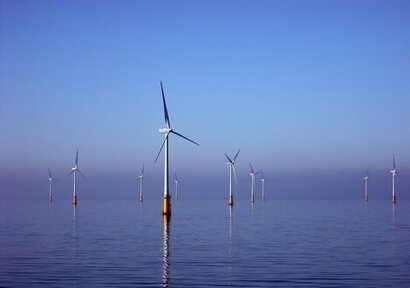
The companies are also underlining their ambitions to reduce their CO2e emissions along the entire value chain. The top sections of 56 out of 112 towers will be made with low-emission steel, accounting for 24 percent of the mass of the heavy steel plates used for the wind farm area and leading to a 16 percent reduction in the towers’ overall carbon footprint.
The low-emission steel is fabricated using 100 percent steel scrap melted in an electric arc furnace powered by 100 percent wind energy, reducing the carbon footprint by 66 percent compared to heavy steel plates made via a conventional steelmaking route.
“We are pleased to have signed this conditional agreement to deliver our state-of-the-art V236-15.0 MW offshore wind turbine for the Nordlicht projects” said Nils de Baar, President of Vestas Northern and Central Europe. “Vattenfall, BASF and Vestas share the ambition to rapidly expand wind projects and to decarbonise the energy market in Europe, and Nordlicht will play a crucial role in delivering Germany’s energy transition targets. Vattenfall and BASF have a lot of experience in offshore wind projects, and we are looking forward to build this project together with our partners.”
The Nordlicht wind farm area is located 85 kilometres north of the island of Borkum in the German North Sea and consists of two separate locations: Nordlicht 1 and Nordlicht 2. Once fully operational, electricity production is expected to total around 6 terawatt hours (TWh) per year, which is equivalent to the electricity consumption of 1.6 million German households.
The construction of Nordlicht 1 and 2 is scheduled to start in 2026. According to the current state of planning, the wind turbines are to be installed in 2027 (Nordlicht 1) and 2028 (Nordlicht 2). The wind farms are expected to be fully operational in 2028.
For additional information:

